24 Hours Hotline: +86 137-3541-1378
Email:xian@tripstoshanghai.com
24 Hours Hotline: +86 137-3541-1378
Email:xian@tripstoshanghai.com
Before the Third Century BC
It was inhabited by the people of Yuezhi (whose descendents became the Indo-Scythian rulers of northwestern Indiabetween the 1st and the 5th century),Wusun and Xiongnu (a confederation of nomadic tribes from Central Asia).
In the 2nd Century BC
A brave young man,Zhang Qian, went twice from China to the then remote and mysterious regions of the west. His journeys were among the most important in history, because he documented valuable information on its history and geography, leading Chinato discover Europe thus giving birth to the Silk Road.
In 111 BC
Dunhuang was established as a garrison by Emperor Wu of the Han Dynasty, to extend military power and for the benefits of trade. Dunhuang was the frontier, at the west end of the Hexi (west of the Yellow River) Corridor. A long wall, which became part of the Great Wall, was erected to its north and two barriers (Yangguan or Yang Pass and Yumenguan or Jade Gate Pass) were built to its west. Many watchtowers still remain to this day.
The imperial court also moved people from metropolitan Chinato settle here and stationed troops to guard and farm the land. From then on, Dunhuang became a vital military outpost. As a doorway to Central Asia, it had also grown into a commercial centre, bringing exotic imports such as medicine, spices, wine, rugs, fragrant woods, “Heavenly Horses” (the steeds), etc. and exporting silk, porcelain, etc. Because the trade brought huge wealth to China, a ceaseless struggle ensued between the Chinese and others for control of this economic artery. Periodically, this route would fall into the hands of independent feudal rulers. It did not matter who controlled this area, it was always full of peril for the caravans as they might be attacked by brigands or suffer from starvation or lack of water. Despite the hazards, the Silk Road thrived.
From 3rd-6rd Century
When metropolitan China was in turmoil during the Southern & Northern Dynasties, Dunhuang was relatively stable and became a centre of refuge. Its population increased and civilization flourished. During this long period, a group of local Confucian scholars rigorously developed their philosophy. Also, Indian culture, especially Buddhism, was introduced into this area at this time.
The End of the Tang Dynasty
A vast area in northern Chinawas ruled by the Liao kingdom (907-1125) of the Khitan nationality, while another substantial area was controlled by the Western Xia, the Tanguts. Dunhuang fell to the Uyghurs in the 12th century for about fifty years, then it was conquered by the Tanguts and finally in 1227, succumbed to the Mongols who established theYuan Dynasty (1271-1368).
In the Early Ming Dynasty
The government gave up this area and moved the population to the east, leaving Dunhuang as a herding grassland until two hundred years later. An outpost was set up again in 1723 and upgraded to a garrison two years later. People moved back to farm and rebuild this historically significant centre.
Mogao Caves and Buddhism
In Dunhaung, a native-born Yuezhi monk, Fahu (Dharmaksema) was very active in the third century. He was a superb translator, preaching and translating scriptures for many years, earning the name “Bodhisattva of Dunhuang”. He promoted the teachings of Avalokitesvara and might have contributed to make this bodhisattva the most popular.
In turbulent times, people hope to find a spiritual sustenance to get rid of the pain. Buddhism believes that everyone can attain enlightenment and become a Buddha through his own effort. Life is suffering, but one can get rid of the suffering and gain eternal bliss through practice. This belief matches the similar Confucius saying that “Everyone can be a sage”, as well as the Daoist philosophy which focuses on how to get rid of worldly suffering which people experienced too much during war. It also makes people more and more receptive to the teachings of Buddhism.
In the meantime, Buddhist missionaries and pilgrims who were in search of original sources, scriptures and holy sites, began to travel between China, Central Asia and Indiathrough Dunhuang. Thus, a growing Buddhist community was established in Dunhuang and Buddhist buildings, such as stupas and monasteries, were erected. A new style of architecture — cave construction at Mogao in Dunhuang then began.
Dunhuang - Ancient Stop Alongside China Silk Road
In the 2nd century BC, a brave young man, Zhang Qian, went twice from China to the then remote and mysterious regions of the west. His journeys were among the most important in history, because he documented valuable information on its history and geography, leading Chinato discover Europe thus giving birth to the Silk Road.
The Silk Road is named after the lucrative international trade in Chinese silk textiles that started during the Han dynasty (207 BC–220 CE). In addition to silk, a wide range of other goods was traded along the Silk Road, and the network was also important for migrants and travellers, and for the spread of religion, philosophy, science, technology, and artistic ideals.
As a doorway to Central Asia along the silk raod, Dunhuang had also grown into a commercial centre, bringing exotic imports such as medicine, spices, wine, rugs, fragrant woods, “Heavenly Horses” (the steeds), etc. and exporting silk, porcelain, etc. Because the trade brought huge wealth to China.
Yet surprisingly, there is no readily available synthesis of Dunhuang's history as a center on the Silk Road. But it is certain that Dunhuang is one of the important hubs of the "south line" for people travel between India and China on the silk road, which played a key role in the history of China. The formation of Mogao Grottoes is the most powerful evidence. Caravans, monks, cultural envoys, almost all the people passing through Dunhuang have left "Traces" in Mogao Grottoes. It played a key role in the cultural exchange and economic development of Dunhuang.
Prev: Dunhuang Weather & Climate
Next: Dunhuang Facts
Wechat: Chinaprivatetour
24 Hours Hotline:
+86 137-3541-1378
* Authentic Experiences: Genuine local experiences that immerse you in the true essence of Xi'an and beyond.
* Safety First: Highest safety standards with secure activities and reliable transportation.
* Customizable Tours: Flexible itineraries tailored to your interests and needs.
* Local Expertise: In-depth knowledge of Xi'an and China, offering exclusive insights.
* Professional Guides: Licensed bilingual guides with over 5 years of experience.
* Comfortable Travel: Experienced drivers and well-maintained vehicles for a smooth journey.
* Sustainable Tourism: Commitment to responsible tourism and supporting local communities.
* Customer-Focused: Personalized service and continuous improvement based on your feedback.
* Free Cancellation: Cancel up to 24 hours before travel for flexibility and peace of mind.
* 24/7 Support: Round-the-clock assistance for any questions or help needed.
(Your Privacy is Protected)
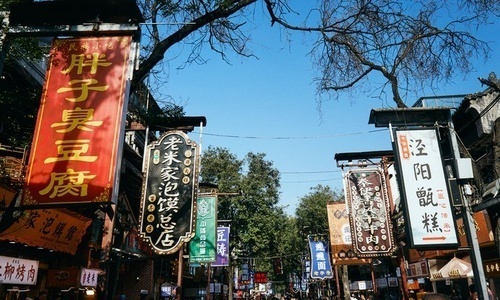 Xi'an Muslim Quarter Travel Guide: Street Food, Culture & Nightlife
Xi'an Muslim Quarter Travel Guide: Street Food, Culture & Nightlife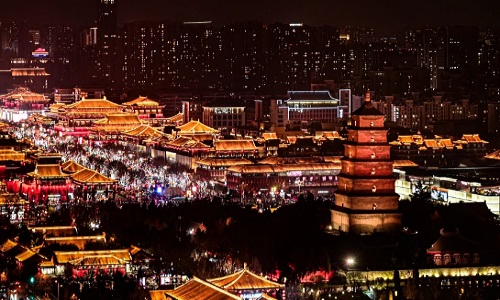 Exploring Grand Tang Mall Xi'an: Shopping, Dining, and Entertainment in the Heart of the Ancient City
Exploring Grand Tang Mall Xi'an: Shopping, Dining, and Entertainment in the Heart of the Ancient City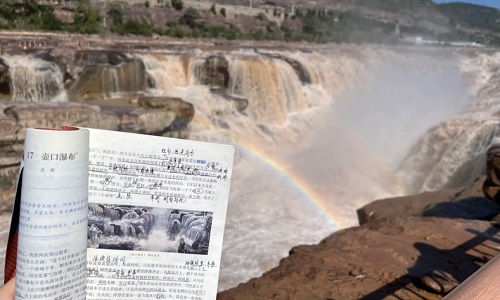 Hukou Waterfall Travel Guide: Visiting the Yellow River’s Most Spectacular Hukou Waterfall from Xi'an
Hukou Waterfall Travel Guide: Visiting the Yellow River’s Most Spectacular Hukou Waterfall from Xi'an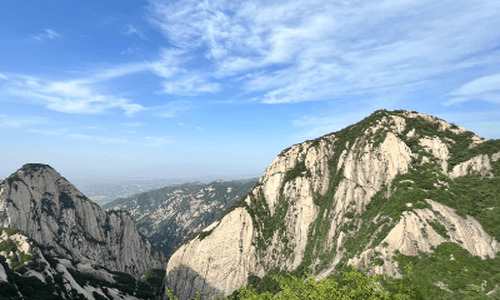 Huashan Mountain Travel Guide: Hiking the Most Dangerous and Beautiful Peak in China
Huashan Mountain Travel Guide: Hiking the Most Dangerous and Beautiful Peak in China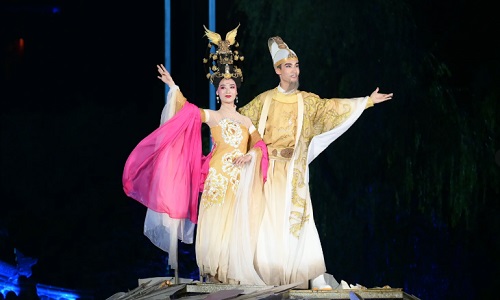 The Song of Everlasting Sorrow: A Timeless Tale of Love and Tragedy in Xi'an
The Song of Everlasting Sorrow: A Timeless Tale of Love and Tragedy in Xi'an Xi’an Qinling Wildlife Park Travel Guide: Explore the Best Zoo Experience in Xi’an
Xi’an Qinling Wildlife Park Travel Guide: Explore the Best Zoo Experience in Xi’an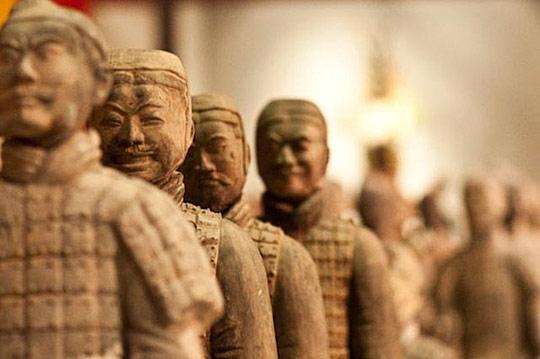 Discover the Terracotta Warriors in Xi’an: A Complete Guide to China’s Ancient Army
Discover the Terracotta Warriors in Xi’an: A Complete Guide to China’s Ancient Army 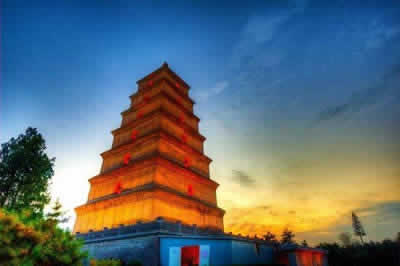 Big Wild Goose Pagoda
Big Wild Goose Pagoda1 to 1 tailor-made service from our professional travel advisors for the most sophisticated
Constantly excellent reviews for attraction, hotel and service Competitive price
Local experts provide quality tours Best selected knowledgeable local guides Authentic local restaurants
7*24 hours available to create you a worry-free tour. No Hidden Fees and absolutely no pressure to buy. Secured









Copyright © 2017 www.xianprivatetour.com All rights reserved. 浙ICP备18056007号-6